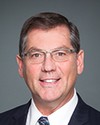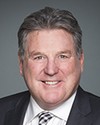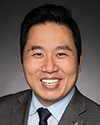Thank you very much, Mr. Arya and Mr. Lamarre.
We'll now move to Mr. Christopherson, please.
Evidence of meeting #54 for Public Accounts in the 42nd Parliament, 1st session. (The original version is on Parliament’s site, as are the minutes.) The winning word was numbers.
A video is available from Parliament.
Conservative

The Chair Conservative Kevin Sorenson
Thank you very much, Mr. Arya and Mr. Lamarre.
We'll now move to Mr. Christopherson, please.
NDP

David Christopherson NDP Hamilton Centre, ON
Thank you very much, Chair.
We were mentioning pilots. Apropos to that, and I say so up front just to get it off my chest, I find it so crazy that pilots these days are being paid so little. Sully, “The Miracle on the Hudson”, had to have a part-time job in order to pay the bills. This is crazy. Anyway, I just wanted to say that.
The other thing I wanted to mention, since we're talking about wages and stuff, when we talk about pilots, again, the number of veterans and even active members who find it necessary to go to food banks continues to be an issue that jars a lot of Canadians. But that's not our focus today and so I want to continue.
Here's where I want to pick up. I would ask colleagues to chime in if you wish, because I'm going into an area that is not clear—and you'll get it in a second.
The auditor's report, on page 11, in paragraph 5.55 says, “Since 2008, the recruiting group has been reduced by about 180 positions, and has closed 13 recruiting locations,” as has been said, “as a result of budget cuts.” Even the Auditor General is acknowledging that there were budget cuts that impacted that. Then, under the response of National Defence on page 9, where the recommendation is given about training and training capacity and recruiting, it says, “Agreed. Several years of reductions to recruiting and training capacity as well as shrinking advertising and marketing budgets contributed to the current levels of institutional capacity.” In a direct answer to a direct question, deputy, you said it was a “bad idea”.
Here's where that takes us. I even welcome your feedback on this because this is our trying to perfect what we do.
Normally we don't get into the politics of whether it was a good idea or a bad idea. We go by what decision was made by the government or the minister. That was the direction. You were given the money. The Auditor General comes in after the fact to see whether you followed the mandate you were given and spent the money you were authorized to spend. Did you do it effectively? That's the accounting process. We try to stay away from the politics. In fact, we work assiduously to stay away from that in this Parliament. In fact, there have been a few since we've felt the need to bring in a minister or a former.
My friend Mr. McColeman has said when you answered with “bad idea”, he immediately...and that gets us into the partisan stuff a bit because he was part of that government, so “Wait a minute, what are these other problems that were showing up in the 2002 and 2006 audits that Christopherson was bouncing off the walls about? How could it be just because of the cuts?”
Here's the thing. If the cuts did directly affect your ability to carry out your mandate, we need to know that and factor that in because that's not your fault. You're left with the business of being loyal to the minister and government of the day and to not throw them under the bus. If we did allow you to do that willy-nilly, every audit report would say, especially if there had been a change of government, that it was the government that cut the funding or didn't let you do this, didn't let you do that, and it was the political side. You were great. They just didn't live up to their part of the thing.
This is where we are right now. It's difficult for us to discern how much of this was your managing as best you could with limited resources or money you thought you had and then it was taken away, versus the two earlier audits and Mr. McColeman's pointing out that there were systemic problems all along.
I think when we're in camera we need to maybe talk about how we pursue this sort of thing. I don't have a question per se in this. I'm pointing out that we don't normally get to where it's just black and white, but here we are. Even the report is saying that the cuts had hurt.
I'm going to move on to another question. I'll afford you a chance, deputy, if you wish to comment on this, or you can just take a pass and I'll move on. Being wise, you'll take the time.
Yes, go ahead.
Deputy Minister, Department of National Defence
I have a short response, just to clarify my remarks.
I don't have a problem with government saying that we need to balance a budget and that all government departments need to tighten their belts.
I wasn't in defence at the time we made the choices of what to cut. I am just commenting on the fact that, at the time, they—probably with the best of intentions—felt they could cut this area and still manage to recruit. What the evidence has shown is that we've cut the capacity to process people. Processing times got longer, and our ability to build the force took longer. In hindsight, that probably wasn't one of our better choices of which area to cut.
I have no problems with government telling us that we all need to cut back to manage a budget, and so on.
NDP

David Christopherson NDP Hamilton Centre, ON
Somebody had to be accountable. The totality of it is that the system isn't working the way it should be and Canadians don't have the defence they should have.
Deputy Minister, Department of National Defence
My challenge right now is to go.... I need to restore some of the capacity in the recruiting group to meet the recruiting levels we need to get in order to rebuild the force to hit the 68,000 on the regulars and the 28,500 on the reserves.
Deputy Minister, Department of National Defence
My job, being in charge of the resources, is to find the resources to allow them to do that.
Conservative

The Chair Conservative Kevin Sorenson
Thank you, Mr. Forster.
We'll now go back to Mr. McColeman, please.
Conservative

Phil McColeman Conservative Brantford—Brant, ON
Thank you, Mr. Christopherson, for a little bit of context. You're absolutely right; this is where we are.
Since we're doing some introspection here, I had my own company for 26 years, a small business. There were times when there were great efficiencies that I could achieve in my operations by reducing my costs, so I appreciate, Mr. Forster, your saying that and putting it in a better context.
I think this goes right to the nub of what this committee is all about. What we want are the appropriate resources in place at the most efficient cost possible to represent the people who elected us to this position to sit here and scrutinize, just as the Auditor General's role is to do that as the lead-in for us to be able to interpret the data he's giving us.
I don't know exactly where I'm heading here on a question, but the reality is that this is what the objective should be here. Take the politics out of it, if we can. It's not always possible to do that, unfortunately, but when it starts to get tainted with, “This year we didn't have a problem” and “That year we did because of these things”, and we start to get that mixed into what the discussion has turned out to be today.... It is, I think, concerning to all committee members that the comment was made that it was a bad decision.
It may not have been that bad of a decision, sir, at the time. It may have been the logical thing to do. You haven't reopened those offices, right? The resources needed to be replenished in a different way in order to be more cost effective. I will just say that.
I'm really not leading to a question, just giving context or adding a bit more from my perspective on where I was headed. There are appropriate times, as you have said, to make cuts for more efficiency, and there are times to replenish and to build back up. Any comments you might have in order to add a little more to it, Mr. Forster, I would appreciate.
Deputy Minister, Department of National Defence
I totally agree with you.
We made a decision to close some offices. That's going to save us some money on bricks and mortar. As you've rightly pointed out, we're not about to reopen those offices. If we thought that was a wrong decision, we would be reopening those offices. What we're seeing now is that there are better technologies and ways to recruit people—online, more targeted—where we would be better off spending our money. What I was more referring to was the capacity of the people we lost to process applications and so on when we did those reductions.
I would agree with you. I think there were elements of it. Instead of putting money into bricks and mortar, rent, heat, lights, yada yada, we can focus it on the people we need to process it and shorten our processing times. As I said earlier, clearly there are systemic issues that have been there for a while that are part of it. This was one part of it in terms of reducing people in the recruiting group who can deal with people, process applications, and get them in the door.
Conservative

Phil McColeman Conservative Brantford—Brant, ON
For the record, how many recruiting centres do we have in the country, bricks and mortar recruiting centres?
Commander, Canadian Forces Recruiting Group, Department of National Defence
We have six recruiting centres, which are the headquarters of 24 detachments, plus two detachments that are open on a part-time basis with staff from those 24 detachments.
Overall, we have 24 plus two detachments and six headquarters, which are recruiting centres sitting above them. My headquarters in Borden does national issues dealing with recruiting. That's the footprint of the recruiting group.
Conservative
Liberal

Shaun Chen Liberal Scarborough North, ON
Thank you very much.
Let me start by saying that I'm very proud of the incredible work that our brave men and women do in the Canadian Armed Forces. I'm so pleased that we're all here today to talk about how we can build a force that is more inclusive, that is the best qualified to carry out the work.
I want to start off with a little pet peeve. I did hear one of the witnesses earlier, in referring to new applicants, talk about “his“ application. I think it's very important for you, as leaders of the department, especially in the context of talking about achieving gender equality, to avoid pronouns that create the atmosphere of it being a male-dominated force. As much as it currently is, we want to move away from that.
With that said, Mr. Forster, you mentioned that the Canadian Armed Forces grew last year. Can you be specific? Were you speaking of the 2016-17 financial year? If you were, what are the total numbers for that year?
Deputy Minister, Department of National Defence
For last fiscal year, I'll ask my colleagues what the growth was.
LGen C.A. Lamarre
I apologize, I was just reaching across to find out if we had the exact numbers of where we are right now. I don't have that exact number, unfortunately. That was a failing on my part. I should have had it handy. I will undertake to come back specifically with an accurate number of where we are.
I can tell you right now that the actual numbers we have are 56,232 of what we call “trained effective strength”. That's the number I have in the hopper who can go on a mission today, at a moment's notice.
In there as well, we have a basic training list. Those are the people who have yet to reach their occupational ready point, if you will. There are approximately 6,400 of them. On top of that, we have another 1,500 of our members who are on the supplementary patient holding list. These are men and women who at this point are suffering from an injury. They might have a broken leg and they're recovering, so they can't yet deploy.
Those are the numbers. I'm giving you those numbers in terms of context of where we are in terms of the shortfall that we're aware of. What I don't have is the difference between last year and the year to date. That's what I'll undertake to get to you.
Liberal

Shaun Chen Liberal Scarborough North, ON
Fair enough.
To me, one of the most important numbers is the number of trained and effective members, which is the 56,232.
There's a bit of a discrepancy that I've been trying to reconcile. The Auditor General, in his report, specifically in exhibit 5.1, points out that over the past four years, we have seen a decrease of the number of members who are trained and effective. That decrease has been year after year since 2012. For example, from 2014-15, the numbers were 56,800 versus the year following, 2015-16, where there were 56,300, and now you're saying there are 56,200.
I think it's important to contextualize the statements we make. It does sound good that the forces are growing, but we in fact have a lot of ground that we need to make up because of the four years of decrease. As well, we're a bit far off from the 60,500 minimum that we would like to have in terms of fully trained members.
Having said that, I want to continue on in terms of what Mr. Arya mentioned with respect to visible minorities. It's wonderful that you have increased the number of women in the forces, 15.2%, compared to 14% earlier this year, in February. However, Mr. Forster, you talked about your work in fast-tracking female candidates to military colleges, expediting their intake. At the same time, we are trying to increase the number of aboriginal and indigenous members, as well as visible minority members. To me, these two initiatives can't happen in silos. In order to increase the numbers in both of these areas, you need to take an intersectional approach.
Mr. Forster, have you considered very targeted programs that specifically look at recruiting women who are also aboriginal and indigenous, or from racialized communities?
LGen C.A. Lamarre
You're absolutely right on many of your assertions, and I want to talk about that in terms of the overall numbers. We are realizing that we're far behind and that 4,000 short is a big target for us to make up. I need to be open about it.
As far as doing the intersection, making sure that we're hitting the women, indigenous people, and visible minorities, they tend to work together in the approach that we have. Specifically, we also have engagements that are looking to encourage...from all those segments.
Let me explain that for you all. The Canadian Armed Forces women in force program is open broadly to women who sign up to come and have the experience with us. With Bold Eagle and Raven, we encourage women from those communities as well, by engaging with the elders there and saying, “This is a program that is open to both men and women, and we want to see applicants from those groups.” We do see a good turnout of women who come out for these indigenous experiential programs, if you will, like Raven and Bold Eagle, so I'm satisfied that we have that one.
As far as the visible minorities, I don't know if we have the exact approach to say that we're looking specifically for women from visible minorities, because from our point of view, we're not trying to grow that set group together. It's not as though the targeting we're trying to do means visible minorities and women are the specific targets. It's in each of those broad targets that we want to include the growth, so you're going to get a bit of a mix of both.
Conservative

The Chair Conservative Kevin Sorenson
Thank you very much, the time is up.
Next is Mr. Christopherson and then Mr. Massé.
NDP

David Christopherson NDP Hamilton Centre, ON
Thank you, Chair. I appreciate the opportunity for a couple more follow-ups.
I want to pick up a bit on the conversation we're having. I just would add my comments to Mr. McColeman's that we are a committee about accountability and transparency. At some point, if a government makes the political decision, which they're entitled to do, to go down an austerity road or a road of cuts, there's a price to pay for that, and somewhere in our system that price has to be shown.
When the Auditor General can make a direct connection between the objectives of a department and the funding, by saying that the funding wasn't there, we need to take that into account. It also works both ways. Those of us who have concerns about what austerity can do could also overplay that hand. Again, facts, facts, facts—at a time when parts of the world want to go away from that—are still the key thing.
We need to have that discussion at some point and to recognize that if damage is being done then it has to be accounted for somewhere. No government gets to just hide it underneath the carpet. It all has to come out. You get the credit for cutting because you balanced your budget, but somewhere down the road there's going to be an Auditor General's report that shows what happened when you made those cuts. That's part of accountability too. I will just leave that there.
I wanted to go to page 9, items 5.50 and 5.45. I'm going to do 5.50 and then 5.45. Overall, compared with the occupations from the other report, the Auditor General's department found that the recruiting group was able to meet its overall recruiting target, which, by the way, was smaller than the needs identified by the regular force. There was a study done to determine what the need was, and then they moved that target. I think the general has said that the reason they did that was that they didn't want to have targets they knew they couldn't meet, but that still leaves us with a problem and a gap between what's identified as what we need and what we're even targeting for.
Having said that, they did meet their overall reduced recruiting target. However, as the Auditor General points out—and he uses the word “however”—the recruiting group achieved this by enrolling more than the adjusted target in certain occupations. They met the big number, and one of the ways that was done was by oversubscribing in certain areas.
I would like some feedback as to what the deal is. I have to tell you, what I wrote down when I read that the first time was, “On purpose?” I would hope not, but it does beg the question. I'll put it this way. Why would you over-hire in one area if you don't need them, other than to make your target numbers, macro numbers, look good?
I see a huddle, and I'm waiting for an answer.